Related Research Articles

Year 1212 (MCCXII) was a leap year starting on Sunday of the Julian calendar.

Lady Godiva, in Old English Godgifu, was a late Anglo-Saxon noblewoman who is relatively well documented as the wife of Leofric, Earl of Mercia, and a patron of various churches and monasteries.
Marianus Scotus was an Irish monk and chronicler. He authored the Chronica Clara, a history of the world.
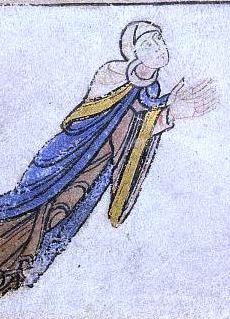
Adeliza of Louvain was Queen of England from 1121 to 1135 as the second wife of King Henry I.

The Annales Cambriae is the title given to a complex of Latin chronicles compiled or derived from diverse sources at St David's in Dyfed, Wales. The earliest is a 12th-century presumed copy of a mid-10th-century original; later editions were compiled in the 13th century. Despite the name, the Annales Cambriae record not only events in Wales, but also events in Ireland, Cornwall, England, Scotland and sometimes further afield, though the focus of the events recorded especially in the later two-thirds of the text is Wales.
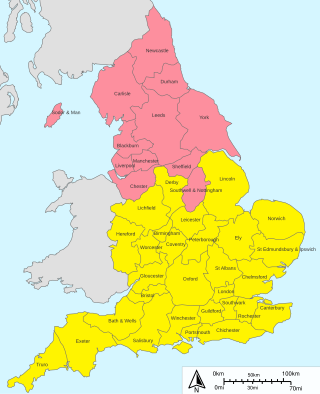
This article traces the historical development of the dioceses and cathedrals of the Church of England. It is customary in England to name each diocese after the city where its cathedral is located. Occasionally, when the bishop's seat has been moved from one city to another, the diocese may retain both names, for example Bath and Wells. More recently, where a cathedral is in a small or little-known town or city, the diocesan name has been changed to include the name of a nearby larger city: thus the cathedral in Southwell now serves the diocese of Southwell and Nottingham, and Ripon Cathedral was in Ripon and Leeds from 1999 until 2014. Cathedrals, like other churches, are dedicated to a particular saint or holy object, or Christ himself, but are commonly referred to by the name of the city where they stand. A cathedral is, simply, the church where the bishop has his chair or "cathedra".
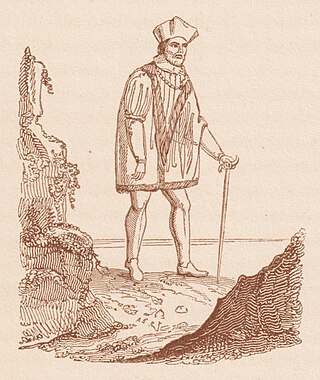
William Worcester, also called William of Worcester, William Worcestre or William Botoner was an English topographer, antiquary and chronicler.
Chronicon Scotorum, also known as Chronicum Scotorum, is a medieval Irish chronicle.
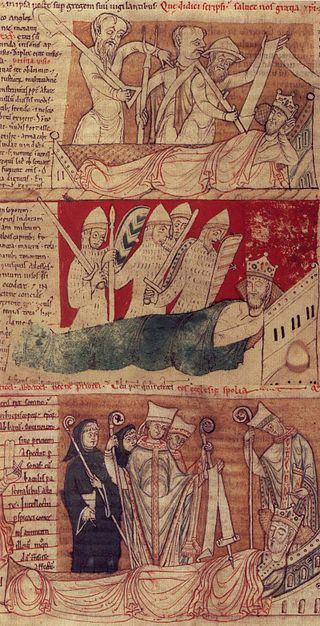
John of Worcester was an English monk and chronicler who worked at Worcester Priory. He is usually held to be the author of the Chronicon ex chronicis.
Simon was a medieval Bishop of Worcester.
John of Coutances was a medieval Bishop of Worcester.
Hugh Sottovagina, often referred to as Hugh the Chanter or Hugh the Chantor, was a historian for York Minster during the 12th century and was probably an archdeacon during the time of his writing. He was the author of the Latin text known as the History of the Church of York.

The medieval cathedrals of England, which date from between approximately 1040 and 1540, are a group of twenty-six buildings that constitute a major aspect of the country's artistic heritage and are among the most significant material symbols of Christianity. Though diverse in style, they are united by a common function. As cathedrals, each of these buildings serves as central church for an administrative region and houses the throne of a bishop. Each cathedral also serves as a regional centre and a focus of regional pride and affection.
Peter of Canterbury or Petrus was the first abbot of the monastery of SS. Peter and Paul in Canterbury and a companion of Augustine in the Gregorian mission to Kent. Augustine sent Peter as an emissary to Rome around 600 to convey news of the mission to Pope Gregory I. Peter's death has traditionally been dated to around 607, but evidence suggests that he was present at a church council in Paris in 614, so he probably died after that date.
Hemming was a monk, author and compiler in medieval England from around the time of the Norman conquest of England. He was a senior brother at Worcester Cathedral Priory, and his significance derives from the monastic cartulary attributed to him.
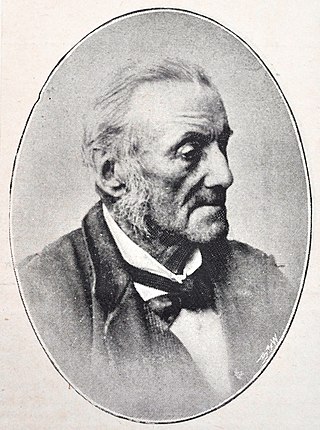
Francis Alfred Skidmore was a British metalworker best known for high-profile commissions, including the glass and metal roof of the Oxford University Museum of Natural History (1859), the Hereford Cathedral choir screen (1862) and the Albert Memorial (1866–73) in London. Skidmore was heavily influenced by Gothic Revival style, a movement characterised by its use of medieval designs and styles. He was a member of both the Oxford Architectural Society and the Ecclesiological Society, two organisations which endorsed the Gothic Revival style. Skidmore also worked closely with architect Sir George Gilbert Scott.

St Mary's Priory and Cathedral was a Roman Catholic institution in Coventry, England, founded in the 12th century by transformation of the former monastery of St Mary, and destroyed during the Dissolution of the Monasteries in the early 16th century. It was located on a site north of Holy Trinity and the former St Michael's parish churches in the centre of the city, on a site bordered by Priory Row to the south, Trinity Street to the west, and the River Sherbourne to the north. Excavated remains from the west end of the cathedral are open to the public.
The Archdeacon of Birmingham is a senior ecclesiastical officer within the Diocese of Birmingham.
The Winchcombe Annals, sometimes known as the Later Winchcombe Annals, are a Latin chronicle compiled c. 1240 by an anonymous monk at the Benedictine abbey, Winchcombe Abbey.
The Winchcombe Chronicle is a Latin chronicle of the town of Winchcombe from about 1140-1145.
References
- 1 2 Hayward, Paul Antony.,The Winchcombe and Coventry Chronicles: Hitherto Unnoticed Witnesses to the Work of John of Worcester, The Medieval Review 12.02.12.
- ↑ Hayward, Paul Antony, “Coventry Chronicle”, in: Encyclopedia of the Medieval Chronicle, Edited by: Graeme Dunphy, Cristian Bratu